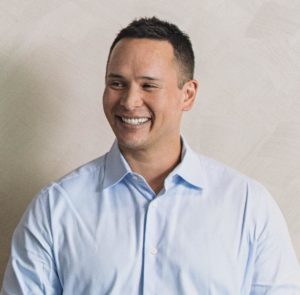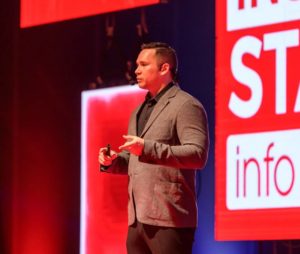
Thomas Thurston from WR Hambrecht will give a keynote talk at the upcoming HPC User Forum.
The High Performance Computing (HPC) market, with all its associated ecosystem technologies, offers unprecedented opportunities for companies looking to expand through strategic acquisitions. However, HPC is a dynamic and turbulent market segment—an entire, tightly connected ecosystem where technology leadership, attitudes, and confidence change frequently.
For companies considering a strategic investment such as an acquisition, as well as for the investors, the task of finding and analyzing the right investment targets in the HPC market segment is akin to walking through a minefield. They not only have to find what’s out there on the surface, but they also need to determine what the hidden opportunities and disruptors are.
When it comes to successfully identifying the likely success of companies, and steering an effective investment strategy, there is one organization that appears to be well ahead of the pack.
The company is WR Hambrecht and the person guiding their analysis and decision-making process utilizing a proprietary software system he developed more than a decade ago is Thomas Thurston, Partner and Chief Technology Officer of WR Hambrecht Ventures.
Soft spoken, focused and humble, Thurston brings a breath of fresh air to the stereotypical presentations we’ve seen from many VC firms. His knowledge is undeniable and his discussions are intriguing. He is a sought-after public speaker. After all, who wouldn’t like to chat with the person Wired Magazine called “The man who knows whether any start-up will live or die?”
Many of you will remember the movie Moneyball, a 2011 biographical sports drama film starring Brad Pitt and Jonah Hill, and nominated for six Academy Awards. Well, Moneyball depicted a sports parallel to what Thurston’s approach and proprietary technology is doing for businesses – using data science to better pick winners.
The theory behind WR Hambrecht’s approach is not entirely new, and it’s hard to find a major organization today that doesn’t have data scientists on the payroll. Many private investment groups, banks, industrial organizations and even medical research organizations are attempting to use a data-driven approach to help guide their investment strategies. But to date, it doesn’t appear that any firm is coming close to achieving the sophistication and accuracy that Thurston and his team describe.
Thurston, who has been with WR Hambrecht more than a decade and became a partner in 2013, is frequently credited for his pioneering efforts in the statistical modeling and evaluation of business plans factoring in a company’s strategy along with known and unknown market competitors, both established and upcoming, as well as market trends most people would never see. Complicated? Definitely. But with a team of 9 data scientists, powerful computer resources, and WR Hambrecht’s proprietary MESE® computing system, Thurston’s team has improved the firm’s batting average by more than 3X.
According to Thurston, most VCs and investment groups will typically have comfort zones—markets or technology areas or vertical market sectors in which they feel comfortable, and where they know they can corroborate assumptions by talking to known experts. That’s why you often see the same investors coming back to companies they are already familiar with and already have investments with. But investing in a market segment like HPC requires a strong stomach, a leap of faith, and exploration and analysis of market trends and potential disruption trends that are simply not obvious on the surface—data that most firms are just not mining. Thurston believes that is where WR Hambrecht really shines.
In a June 2017 article in Tech Crunch, Tomar Dean reported “A VC fund needs a 3x return to achieve a “venture rate of return” and be considered a good investment.” In that same article, he reported that 95 percent of venture funds are juggling somewhere between breaking even and downright losing money. This means only 5% of the venture funds are succeeding. According to Thurston, WR Hambrecht has broken this mold and is realizing a significantly higher success rate.
We don’t have to be intimately familiar with the company, its management or its technology and products in order to determine the investment potential and whether they are on the right path or headed down a rocky road,” says Thurston.
Players in the HPC Market – Pay Attention
“When an HPC company looks at making a strategic investment, they need to look at the investment in the same light and with the same due diligence as launching a new start-up company,” says Thurston. “The acquisition target may ultimately become an operating group, a division, a research group, or a wholly-owned company, but that doesn’t really matter. The analysis of what to acquire, when to do the acquisition, and understanding what impact the deal will have on the company’s existing products and market position will help answer some of those questions.”
According to Thurston, “With our proprietary MESE computing system, we can identify potential investment targets and disruption companies that aren’t even showing up on the radar screens of most investment firms—companies that don’t even disclose public data.” If an HPC company is looking to make a strategic acquisition, partner with an upcoming market disruptor, or invest in a hot start-up, that’s where we can help.”
HPC is a highly interconnected market. We look at systems, software, architectures, hardware components, and the ecosystem including OEMs, services, government suppliers, buyers, and interaction, and all the other elements of HPC. We understand that a disruption in one area often has massive ripple effects across the entire ecosystem.”
We asked Thomas to give us an example of a market shift and how WR Hambrecht addressed it.
Here is his response:
Well, a good example would be edge computing. With HPC and enterprise tasks moving from on-prem, to the cloud, to now partially somewhere in between, we wondered if edge computing was going to open up cracks in the market for new companies to enter and disrupt.”
“First, our team organized the market into a couple dozen broad segments, like chipsets, wireless providers, edge colocation vendors, equipment vendors, and so forth. Then our computing system, which is called MESE® (sounds like ‘peace’), populated the segments by identifying nearly 700 companies across the categories. Some of the companies were established incumbents like Intel, Cisco, Comcast, etc. Lots were startups and mid-sized companies in and around the edge computing ecosystem. While around half of the companies were publicly traded with plenty of public data, the other half were privately held – so without MESE® we’d have no way of estimating their financial or commercial performance.”
“MESE enabled us see how each of the roughly 700 companies were individually growing or declining, how much traction each was getting in the market relative to its competitors, what likely valuations were, how the companies were interconnected within their market segments as well as across the edge computing ecosystem as a whole. To our surprise we found that, while edge computing was a growing trend, most companies in the ecosystem were struggling for growth.”
“There were also rock stars, new and old, that were putting up impressive growth in the edge ecosystem. Incumbents like Azure and AWS were finding solid growth in edge computing, open source efforts like Kubernetes and Risc-V were also having growth sprees, driving some relative newcomers like Portworx to jump out as highly attractive investment candidates. With MESE® we were able to see all this and put it into context, whereas without the benefit of analytics we’d be stuck trying to get a “feel” for things just like everyone else without the benefits of hard visibility.”
So, how would an HPC company take advantage of what WR Hambrecht has to offer?
 According to Thurston, “Well, we would never share our technology with other funds because it’s such a proprietary advantage. I also don’t see a future where we’ll open it up as some kind of SaaS platform or a service; again that would put too much value at risk. We aren’t interested in making our capabilities the basis of some kind of startup or consultancy. It’s far more efficient to stick with venture capital and asset management where our system’s insights can be monetized directly in their purest forms.”
According to Thurston, “Well, we would never share our technology with other funds because it’s such a proprietary advantage. I also don’t see a future where we’ll open it up as some kind of SaaS platform or a service; again that would put too much value at risk. We aren’t interested in making our capabilities the basis of some kind of startup or consultancy. It’s far more efficient to stick with venture capital and asset management where our system’s insights can be monetized directly in their purest forms.”
“That said, we’ve historically worked with a small handful of companies each year. They get access to our tools and its insights, and we get access to their people and expertise. They want our quant, and we want their qual. That’s a big way we evolve our system, but again, it’s only done with a small number of companies each year because we have to balance our interest in learning against concerns over trade secrets. We don’t want much to get out.”
No wonder Thurston and his team are in such demand.
Their success has been widely covered. Thurston and his team at WR Hambrecht Ventures have been featured in a wide list of impressive publications as shown here:
My first meeting with Thomas Thurston was ten years ago in Portland, Oregon. I’ve seen first-hand how audiences react to his captivating, engaging presentation style. Personally, I’m looking forward to hearing him speak at the 76th HPC User Forum March 30th to April 2nd in Princeton, NJ. Hope to see some of you there.
If you would like to get a little more information on WR Hambrecht, check out this video.





